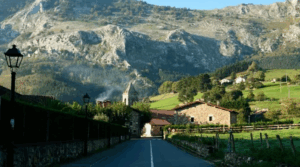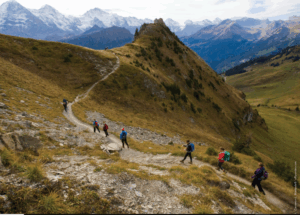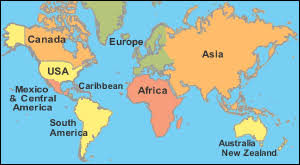Biodiversity under threat
By Uday R Sharma
The government-proposed new roads that pass through the Chitwan National Park and the Bardia National Park have now been stayed by the Supreme Court. The court was responding to the writ petition filed by Legal Forum for Environmental Development and Protection, and Forum for the Protection of Consumers´ Rights and the Supreme The SC decision reflects the top judges’ commitment for conservation. It is the politicians heading important government ministries who seem to have failed to grasp the sensitivity of the matter.
In Nepal, conservation history dates back nearly four decades as the Chitwan National Park in 1973 became the first formally-established park in the country. Today, the protected areas in Nepal represent over 23 percent of the country´s land, totalling more than 3.4 million hectares. These protected areas include 10 national parks and 12 buffer zones, protecting areas of rich biodiversity across various ecological zones.
But while in the past biodiversity conservation was of primary importance, in recent decades, maybe owing to the prolonged political instability, there has been significant erosion in the commitment of politicians and bureaucrats to take up the case with same vigour. And yet, the local communities in the buffer zones and the people at large continue to support biodiversity conservation as they realize its enormous future benefits.
In recent decades public awareness on biodiversity conservation has grown manifold. This is exemplified by the abovementioned writ petitions. Such moves would have been unthinkable when the World Bank-funded highway was proposed to pass through the Bardia National Park; or when a road was built through Langtang National Park. I was invited to speak about these government moves to a group of concerned citizens on the day Advocate Ram Kumar Acharya filed the writ aforesaid writ.
I was amazed at some of the things that were said during at that public meet. When advocate Jyoti Bania and other speakers said the biggest threat to these jewels of Nepal come from government agencies, I could sense a murmur of approval. They said there might be a hidden motive for the debasement of the last remaining true worth of Nepal: A road from Madi to Tribeni passing through the last remaining virgin forests along the Reu River would bisect the dense sal forest. The proposed road would pass through densely populated habitats of rhinos, tigers and ungulates. No wonder, resorts like Tiger Tops or Temple Tiger made hay in those areas. It is important to understand that the proposed road in Chitwan is neither the wish of the people of Madi nor of Nawalparasi.
The road construction would allow contractors to cut down mature sal trees in Chitwan and Bardia. In monetary terms, three mature sal trees equate to Indian-made Maruti car. The road in Chitwan would provide an easy passage for poachers to cross the borders with rhino horns and other trophies. The less-frequented road would provide all kinds of opportunities to trim down the last remaining old forests of Chitwan. In this, government officials seem to have forgotten their roles and duties in protecting Nepal´s environment; out of ignorance or owing to political pressure. How otherwise would the Ministry of Environment approve the EIA (Environmental Impact Report) for the Telpani Road in Bardia National Park? The road passes through the best wildlife habitats of elephant, tiger and recently introduced rhinos.
The valley the road is proposed to go through is one of the unique wilderness areas in Nepal. EIA is only a management tool to evaluate environmental effects of a project and it aids in planning and assessing alternatives. It helps predict direct and indirect impacts and to design measures for mitigation, management and monitoring. But, if the tool is used to justify a project, it can become a means to damage the environment. And that is what seems to have happened in the case of Telpani Road. It is not yet clear how the Ministry of Forests and Soil Conservation, to which these protected areas belong, sees these projects.
The Chitwan National Park has been a World Heritage Site since 1984. The Convention Concerning the Protection of the World Cultural and natural Heritage (World Heritage Convention, in short) enlisted CNP for four main reasons: (1) The park is the last remaining stronghold of high biological diversity protected from human interferences; (2) Habitats of endangered tiger, rhinoceros, gaur, gharial and Gangetic dolphin reside in the park; (3) The park has outstanding and beautiful ecosystems of Churia Valley; and (4) It enjoys a high level of government protection. The proposed road construction being pushed by Ministry of Physical Planning and Works would undermine these unique attributes of CNP.
National parks like Chitwan and Bardia, the perennial tourist draws can, if protected and managed better, provide good income for both the government as well as the local communities. After the creation of buffer zones around these parks, the communities are well aware of these potentials, and it would be difficult for the corrupt and mislead politicians at the centre to rule the roost anymore. In the words of B K Dalit, an environmental activist in his twenties, “If we cannot protect our parks, who can?” Protected areas in Nepal have survived all difficult political changes because of the strong support of the local communities, especially the youth. We must be hopeful the prolonged political fluidity will not heavily tax these marvellous jewels. That a strong youth voice will be heard whenever the government tries to ravage nature.(The writer is a biodiversity expert and former chief warden of Chitwan National Park)- Republica














